Gordon G. Chang's Blog, page 3
November 23, 2016
A New Way of Looking at China
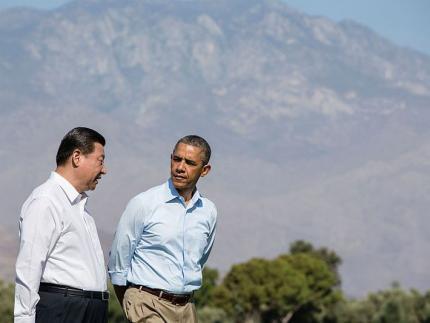
“I continue to believe that a constructive US-China relationship benefits our two peoples and benefits the entire globe,” said President Obama before beginning his meeting with Xi Jinping in Lima on Saturday. “And the structure and framework of cooperation, the frequent meetings and consultations that we’ve established I think have been extremely productive.”
The meeting in the Peruvian capital with his Chinese counterpart was undoubtedly the final one of his term.
Obama, although expressing concerns, could nonetheless not stop talking about cooperation between his country and Xi’s. Yet after so many opportunities to exchange views—this was the ninth meeting of the two since Xi became the Communist Party’s general secretary in November 2012—China’s behavior has deteriorated, almost across the board.
During Xi’s four years, Beijing moved fast to close off its domestic market to foreign competitors, continued to transfer materials and components for North Korea’s ballistic missile and nuclear weapons programs, and tried to redraw its boundaries at the expense of neighbors, from India to South Korea.
These attempts affected more than states in close proximity to China. Beijing, unfortunately, threatened the post-war system by, among other things, trying to close off international water and airspace, thereby impinging on freedom of navigation. If the US has had any consistent foreign policy since its first years, it has been the defense of the global commons. Of particular concern in this regard is Beijing’s provocative November 2013 declaration of its East China Sea Air-Defense Identification Zone.
China has also directly challenged America. Despite last September’s agreement announced in the Rose Garden by Obama and Xi, China is still cyber attacking American corporations to steal commercial secrets. And propaganda blasts against Washington occur almost daily.
Yes, Beijing is cooperating with the Obama administration on climate change, but that should not be surprising. China can make—and honor—climate promises because it is emitting less carbon even though automobile usage is increasing. Last year, for instance, the country’s carbon dioxide emissions fell at least 0.7% percent, and this year they are on track to drop as well.
China is emitting less primarily because factories are not working full-time. Its manufacturing output appears to have contracted in 2015, and the sector may be shrinking again this year. Beijing, in short, is making no sacrifice by promising to emit less. On the contrary, Chinese officials through climate deals may well be trying to rein in the American economy, which is likely to boom if Trump succeeds in lowering taxes, cutting back the Affordable Care Act, and reducing regulation.
In Lima, Obama spoke as if meetings were the goal and measure of his diplomacy. In fact, the president will be measured by what those meetings and consultations actually accomplished.
Although the Administration, to its credit, strengthened regional alliances and bolstered other relations, the president’s China policies did not prevent China from increasingly challenging its neighbors, the United States, and international norms. Yet the failure of America’s China policies is not a recent phenomenon. Since Nixon’s groundbreaking 1972 visit, Sino-US relations have progressed through many phases, but in the last two decades American attempts at relationship-building have worked better for China than America.
President-elect Trump intends to reverse that dynamic. During the campaign, he talked a tough line, for instance calling for a 45 percent across-the-board tariff on Chinese goods and making it clear he would impose costs on China in general. Almost no Washington policymaker thinks that way, but Xi’s Beijing has not, except in the climate area, reciprocated America’s generous initiatives.
Xi this month told Trump over the phone that cooperation is “the only correct choice for China and the United States,” but the question is whether an increasingly assertive Beijing is able to cooperate with Washington.
OG Image: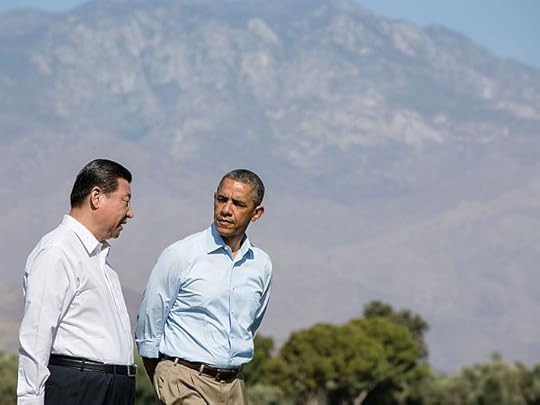 Asia PacificNorth AmericaChinaUSPresidentBarack ObamaObamaPresident ObamaXi Jinping
Asia PacificNorth AmericaChinaUSPresidentBarack ObamaObamaPresident ObamaXi Jinping
November 16, 2016
Taiwan's Hung Hsiu-chu Freelances with China's Xi on 'One China'
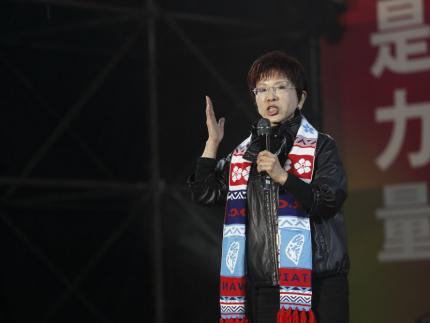
On the first of this month, Communist Party General Secretary Xi Jinping met his counterpart from Taiwan’s Kuomintang, Hung Hsiu-chu, in Beijing. It was the first time the two spoke to one another as heads of their respective political parties.
The event highlights the continuing failure of Beijing, for all its evident power, to have its way with Taiwan.
During their meeting, both Xi and Hung expressed full support for the so-called 1992 Consensus, an understanding that there is only one China, that Taiwan is a part of that country, and that Beijing and Taiwan have their own interpretations of the situation.
The Communist Party believes Beijing is the sole legitimate government of that “one China,” while the KMT, as the Kuomintang is commonly known, maintains Taipei is.
The Consensus, which allows both “sides” to shelve the intractable issue of sovereignty, was the basis for the relatively quick progress on economic and other links that occurred when the KMT’s Ma Ying-jeou was Taiwan’s president, from 2008 to this May.
“Our two sides share a common fate and we must resolutely uphold peace and stability across the Taiwan Strait based on the 1992 Consensus and its ‘one China’ principle,” Xi said on the eve of meeting Hung. Hung reciprocated with similar comments.
There is, however, a problem for Xi and the notion that China includes Taiwan. The KMT, which promotes the 1992 Consensus, has been thrashed in a series of elections, local and nationwide. In January, the party lost the presidency and, for the first time ever, control of the Legislative Yuan, the national law-making body. Taiwan’s current leader, Tsai Ing-wen of the Democratic Progressive Party, has yet to affirm the Consensus, earning Beijing’s ire.
Beijing has attempted to punish Tsai and the DPP, as the ruling party is called, by ending business exchanges, cutting formal communication links, and limiting tourist visits. The punitive actions do not appear to have helped Beijing’s cause on the island.
The fundamental problem for China is that only a small, and declining, portion of the Taiwan population sees themselves as “Chinese.” An American Enterprise Institute study released late 2014, for instance, shows 60.4% of citizens say they are “Taiwanese” versus 3.5% responding “Chinese,” with the rest classifying themselves as both.
When Xi talks about “the Chinese people” and “Chinese nation,” as he does, he is alienating a large portion of Taiwan’s population.
And that is one of the reasons why the fiery Ms. Hung is unpopular at home. Her aborted run for the presidency—the KMT removed her as its presidential candidate mid-stream—helped the usually factious DPP score a resounding victory in January.
Hung makes the argument that the KMT has a responsibility to maintain exchanges with “mainland” China for the sake of Taiwan, but independence-minded Taiwanese suspect her real objective is to use discussions with Beijing to negotiate Taiwan’s absorption by the mainland.
Whether those fears are founded or not, she is now dividing her own party. A remnant seeks to put cross-strait relations at the center of the KMT’s platform while others see reform and localization as the keys to returning to power. The latter group looks to be more savvy because Hung’s China-focused diplomacy is not playing well on the island of 24 million.
“Taiwanese public and media also generally remain critical of the meeting,” writes Cary Huang, South China Morning Post columnist, about the Xi-Hung discussions. “They questioned the legitimacy of Hung as Taiwan’s representative in high-level talks and her claim to seek a peace accord with the mainland, without any authorization from the ruling government.” Huang also notes China’s “pro-KMT policy” can make the KMT even more unpopular.
Beijing may be playing this weak hand because it has no options. As the University of Pennsylvania’s Arthur Waldron told me this week, referring to the policies of Chinese leaders toward Taiwan, “They can’t win a vote, and they can’t win a war.”
The recent meeting between Xi and Hung suggests that, at least for the moment, China has lost its way when it comes to influencing the island that it so desperately wants as its own.
OG Image: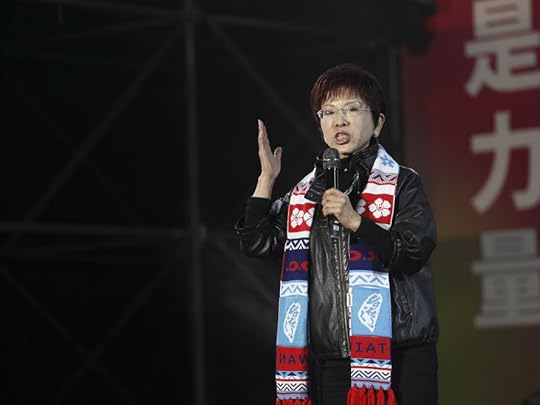 Asia PacificChinaTaiwan
Asia PacificChinaTaiwan
November 9, 2016
China’s Meddling Sparks Hong Kong Protests
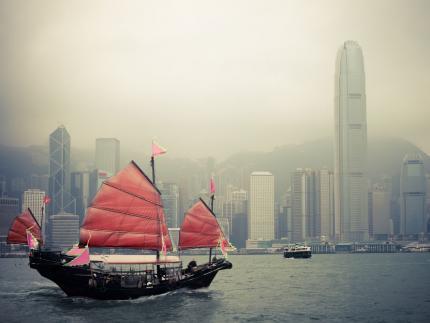
Residents of Hong Kong spilled out into the streets Sunday in two separate demonstrations—one of them violent—to protest an impending ruling further restricting the city’s autonomy.
The incidents highlight Beijing’s increasingly hardline and inept handling of Hong Kong, one of China’s Special Administrative Regions.
Estimates vary, but on Sunday afternoon between 8,000 and 13,000 residents marched from the Wanchai to Central districts to protest the anticipated interpretation of the Basic Law by the Standing Committee of the National People’s Congress. An unruly group of perhaps 4,000 gathered in front of Beijing’s Liaison Office in the Sai Wan district that evening.
The interpretation, which was issued Monday morning, prohibits two newly elected independence-minded activists from taking their seats in the Legislative Council.
When they took the oaths last month to assume their places in the legislature, Sixtus “Baggio” Leung and Yau Wai-ching of the Youngspiration party pledged allegiance to the “Hong Kong nation,” in effect denying China’s sovereignty, and displayed a banner with the words “Hong Kong is not China.”
Their oaths were rejected, but Legislative Council President Andrew Leung Kwan-yuen decided to give the pair another chance. Leung Chun-ying, Hong Kong’s chief executive, soon instituted a court proceeding to prevent the two activists from retaking their oaths.
Beijing then signaled it would short-circuit the judicial process by having the Standing Committee of the National People’s Congress issue an interpretation of the Basic Law, a Chinese statute often called Hong Kong’s “mini-constitution.” The NPC, as China’s legislature is known, has issued four interpretations of the law but never on a matter under consideration in a pending court case.
Although many in Hong Kong have criticized the “antics” of Sixtus Leung and Yau Wai-ching, there is widespread opposition to China’s interpretation, seen as unwarranted interference in the affairs of the city. Take “Ben,” a protestor at the Wanchai-Central march, who told the South China Morning Post that he did not support the prospective legislators. “We disagree with [their] actions, but why should Beijing shut the door so fast when the court was still handling the judicial review?”
The concern of that single protestor has been echoed throughout the city’s establishment. The Hong Kong Bar Association, for instance, called an interpretation a “severe blow” to judicial independence and said it would undermine the confidence of the international community in Hong Kong’s autonomy.
Hong Kong flourished after Britain ”handed over” the city to China in large part because Beijing promised autonomy until 2047 with its “one country, two systems” model of governance. At first, China appeared to leave Hong Kong alone. In recent years, however, meddling has severely eroded popular support for Beijing.
For instance, a NPC interpretation on the method of electing the chief executive, the city’s top official, sparked the 79-day “Occupy Central” protests of 2014. China’s harsh reaction to the massive series of demonstrations helped create an independence movement that now appears to claim the support of nearly a fifth of the population.
Had Sixtus Leung and Yau Wai-ching been allowed to take their seats they would have been marginalized in the 70-member LegCo, the informal name of the legislature. Now, of course, they have become popular symbols, and they will continue to bedevil Beijing.
“If they go ahead and make an interpretation tomorrow, Hong Kong people will be infuriated and this will almost certainly add to the independence movement,” said Chapman Chen, who marched on Sunday. “ ‘One country, two systems’ is an illusion—2047 has come. Hong Kong autonomy is fake.”
Beijing can keep Leung and Yau from ever serving in the Legislative Council, but the cost for China will surely be years of resistance by a growing proportion of people determined to govern themselves.
OG Image: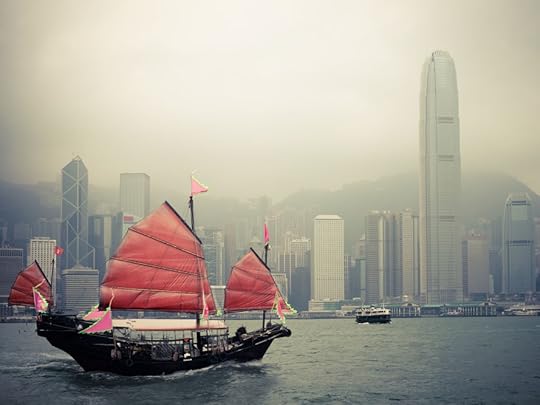 Asia PacificChinaHong Kong
Asia PacificChinaHong Kong
November 2, 2016
Duterte's Claims of Diplomatic Success Are Premature
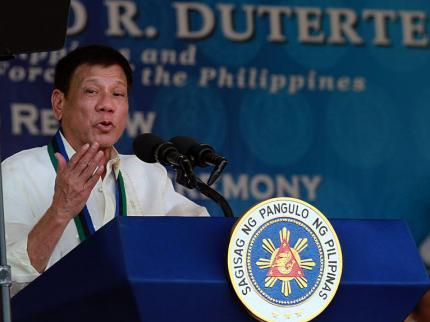
On Sunday, Philippine Defense Secretary Delfin Lorenzana announced that, contrary to earlier reports, Chinese vessels had not left the vicinity of Scarborough Shoal in the South China Sea. He said, however, China was allowing Filipino fisherman near the contested feature.
The opening of the shoal was an important achievement for Philippine President Rodrigo Duterte after his visit to Beijing earlier this month.
Lorenzana said that at least four of China’s coast guard craft were still around Scarborough, which is just 124 nautical miles from the main Philippine island of Luzon. The feature, just rocks forming a coral lagoon, guards the mouths to strategic Manila and Subic bays. The shoal is about 550 nautical miles from the closest Chinese landmass, Hainan Island.
China seized Scarborough in early 2012 by dishonoring an agreement, brokered by Washington, to withdraw its craft. Both Manila and Beijing claim the shoal, which is inside China’s infamous—and now invalidated—“nine-dash line.” For the last four years, the Chinese have used forceful tactics to keep Philippine craft away from the feature.
Beijing in recent months had signaled it would reclaim and fortify Scarborough, just as it had done with Mischief Reef, seized from Manila in 1994, and several features in the Spratly chain in recent years. There are reports President Obama in March warned Xi Jinping, his Chinese counterpart, against cementing over Scarborough. The American leader may have delivered the same message in September at the G20 meeting in Hangzhou.
In any event, the Chinese refrained from fortifying Scarborough and now Filipinos have unfettered access to the shoal. It is not clear, however, how long the Chinese will allow Philippine fishing vessels to sail these waters.
On one hand, China may keep the feature open indefinitely. After all, allowing Philippine fishing craft there supports Beijing’s new friend, Duterte. By giving the brash Filipino a big win, China is enticing Manila to abandon the US, which is the only nation that is obligated by treaty to defend the territorial integrity of the Philippines.
Yet there is a limit as to how far Beijing can go in giving Duterte what he wants. China’s Communist Party, especially in the last few years, has staked its legitimacy on defending Chinese territory, and permitting Filipinos to fish in waters inside the nine-dash line violates what Beijing claims is the country’s sovereignty.
To protect that sovereignty, Chinese Foreign Ministry spokesperson Hua Chunying on Monday said there had been no change of jurisdiction over Scarborough. Beijing, she said, merely “made some arrangements on issues of Duterte's interest for the good of the two countries' friendship."
At the moment, Scarborough is no longer a flashpoint, as it has been for more than four years. That’s progress in a sense. Yet the postponement of the crisis has not resolved the long-term confrontation over the nine-dash line claim.
Beijing demands everything inside that line, including various features close to the main islands of the Philippines and which Manila believes are its own. Duterte, of course, cannot hand Scarborough—or any other reef for that matter—to China. That would be true even if Manila’s sovereignty claims were weak as a matter of international law. Yet those claims look especially strong after The Hague’s July 12 lopsided arbitral decision against Beijing in the landmark case Philippines vs. China.
Duterte, therefore, still needs a solution for the larger standoff. One can argue that the Philippine president’s China’s diplomacy has bought some time, but the day of reckoning has yet to come as Chinese craft sail the waters of Scarborough.
 Asia PacificPhilippinesChinaManilaDutertePresidentDelfin LorenzanaRodrigo Duterte
Asia PacificPhilippinesChinaManilaDutertePresidentDelfin LorenzanaRodrigo Duterte
Duterte's Claims of Diplomatic Success are Premature

On Sunday, Philippine Defense Secretary Delfin Lorenzana announced that, contrary to earlier reports, Chinese vessels had not left the vicinity of Scarborough Shoal in the South China Sea. He said, however, China was allowing Filipino fisherman near the contested feature.
The opening of the shoal was an important achievement for Philippine President Rodrigo Duterte after his visit to Beijing earlier this month.
Lorenzana said that at least four of China’s coast guard craft were still around Scarborough, which is just 124 nautical miles from the main Philippine island of Luzon. The feature, just rocks forming a coral lagoon, guards the mouths to strategic Manila and Subic bays. The shoal is about 550 nautical miles from the closest Chinese landmass, Hainan Island.
China seized Scarborough in early 2012 by dishonoring an agreement, brokered by Washington, to withdraw its craft. Both Manila and Beijing claim the shoal, which is inside China’s infamous—and now invalidated—“nine-dash line.” For the last four years, the Chinese have used forceful tactics to keep Philippine craft away from the feature.
Beijing in recent months had signaled it would reclaim and fortify Scarborough, just as it had done with Mischief Reef, seized from Manila in 1994, and several features in the Spratly chain in recent years. There are reports President Obama in March warned Xi Jinping, his Chinese counterpart, against cementing over Scarborough. The American leader may have delivered the same message in September at the G20 meeting in Hangzhou.
In any event, the Chinese refrained from fortifying Scarborough and now Filipinos have unfettered access to the shoal. It is not clear, however, how long the Chinese will allow Philippine fishing vessels to sail these waters.
On one hand, China may keep the feature open indefinitely. After all, allowing Philippine fishing craft there supports Beijing’s new friend, Duterte. By giving the brash Filipino a big win, China is enticing Manila to abandon the US, which is the only nation that is obligated by treaty to defend the territorial integrity of the Philippines.
Yet there is a limit as to how far Beijing can go in giving Duterte what he wants. China’s Communist Party, especially in the last few years, has staked its legitimacy on defending Chinese territory, and permitting Filipinos to fish in waters inside the nine-dash line violates what Beijing claims is the country’s sovereignty.
To protect that sovereignty, Chinese Foreign Ministry spokesperson Hua Chunying on Monday said there had been no change of jurisdiction over Scarborough. Beijing, she said, merely “made some arrangements on issues of Duterte's interest for the good of the two countries' friendship."
At the moment, Scarborough is no longer a flashpoint, as it has been for more than four years. That’s progress in a sense. Yet the postponement of the crisis has not resolved the long-term confrontation over the nine-dash line claim.
Beijing demands everything inside that line, including various features close to the main islands of the Philippines and which Manila believes are its own. Duterte, of course, cannot hand Scarborough—or any other reef for that matter—to China. That would be true even if Manila’s sovereignty claims were weak as a matter of international law. Yet those claims look especially strong after The Hague’s July 12 lopsided arbitral decision against Beijing in the landmark case Philippines vs. China.
Duterte, therefore, still needs a solution for the larger standoff. One can argue that the Philippine president’s China’s diplomacy has bought some time, but the day of reckoning has yet to come as Chinese craft sail the waters of Scarborough.
 Asia PacificPhilippinesChinaManilaDutertePresidentDelfin LorenzanaRodrigo Duterte
Asia PacificPhilippinesChinaManilaDutertePresidentDelfin LorenzanaRodrigo Duterte
October 25, 2016
China’s Xi Jinping Creating Succession Turmoil
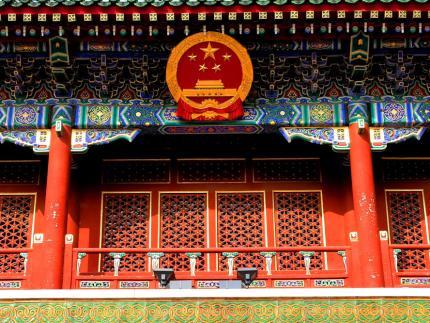
On Monday, China’s Communist Party began its Sixth Plenum, a closed-door four-day gathering during which the party is considering disciplinary rules and membership standards.
The meeting is also a run-up to next year’s crucial 19th Party Congress, where various succession issues will be decided. And, because some believe that General Secretary Xi Jinping is attempting to break decades-old norms designed to ensure stability and continuity, the meeting will be scrutinized for clues as to the degree to which he has consolidated power inside the ruling organization.
Deng Xiaoping, the successor to founder Mao Zedong, sought to regularize the succession process. He and his successor, Jiang Zemin, put in place various guidelines designed to reduce the scope of disagreement as power passes from one ruler to the next. One such guideline was limiting the party’s general secretary, the most powerful post in China, to two five-year terms.
In recent times, the successor to the then-serving leader was named in the middle of the leader’s ten-year stint. Xi, selected in 2012, was expected to leave his post in 2022. That means his successor, if rules are followed, would be designated next year.
There is, however, talk that Xi is bidding for a third term and has been trying to prevent the naming of a successor next year.
There is also speculation that, in a bid to control the Politburo Standing Committee, the most powerful Communist Party body, Xi is trying to jettison another norm, popularly known as “seven-up, eight-down.” Introduced in 2002, this guideline requires Standing Committee members to step down if they are 68 years or older at a congress.
Wang Qishan will be 69 next fall, the expected time of the 19th Congress, and under the rule would be forced to retire. Yet Wang, a Xi ally, runs the party’s Central Commission for Discipline Inspection, which has been used to relentlessly target Xi’s opponents.
At the moment, little opposition to Xi’s bold moves has been expressed publically, but there appears to be infighting behind the curtain, something evident especially this March and May.
For one thing, many in the party are personally opposed to Xi, but there is also general concern about his attempted breaking of the rules that have kept party unity for about a generation.
Almost all analysts believe Xi consolidated his position early in his term, but those judgments now look to have been premature. Why? In large part because Xi, even if he was as powerful as claimed, has roiled the party by trying to ignore the guidelines, conventions, and understandings that have largely avoided discord. Moreover, as Minxin Pei of Claremont McKenna College has written recently, Xi’s maneuverings, especially the so-called anti-corruption campaign, have “destroyed the internal unity of the regime.”
There are hints that Xi in fact has fallen short in his attempts to impose his will. For instance, he has not been officially named the “core” of the party’s leadership, a term reserved for predecessors Deng and Jiang.
There have been a series of publicly aired predictions that Xi will be named “core” soon, perhaps at the Sixth Plenum, but the oft-quoted Zhang Lifan, the Beijing-based commentator, has gone on the record saying that the appeals for him to be so designated suggests he failed to obtain his goals this summer at the informal Beidaihe conclave of senior leaders.
Similarly, in recent weeks, there have been major propaganda announcements about the need for a strong leader, and this could also be a sign that Xi has not been able to obtain compliance from others in the party apparatus.
In any event, it looks as if the institutionalization of the party, which many foreigners have hailed as a sign of progress, is under attack from a wilful leader determined to keep power, perhaps at all costs.
OG Image:
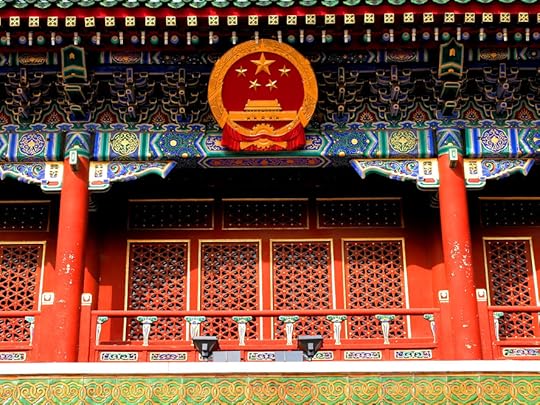 Asia PacificChinaXi JinpingMao Zedong
Asia PacificChinaXi JinpingMao Zedong
October 20, 2016
China Claims Three Straight Quarters Growth at 6.7%
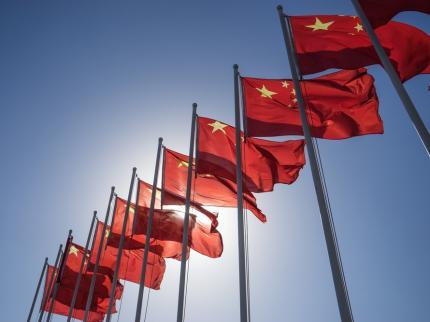
On Wednesday, Beijing’s National Bureau of Statistics reported that China’s gross domestic product in the third calendar quarter of this year grew 6.7%. That is the same rate that was announced for the two most recent quarters.
As Mark Magnier reports in the Wall Street Journal, Wednesday, the three quarters of identical growth “was the first time since Beijing started releasing quarterly figures in 1992 that it had achieved such a feat of consistency.” “It’s quite implausible,” said Julian Evans-Pritchard of Capital Economics to the paper.
The news, however, is not that the People’s Republic of China is fabricating statistics. That, after all, has occurred almost since the founding of the Chinese communist state in 1949. The news is that the constant repetition of Beijing claims seems to be defining the global narrative even though those claims might brazenly overstate China’s true economic performance.
For example, if Beijing is engaging in “implausible” deception, it seems odd that, the Wall Street Journal would essentially give the NBS numbers a pass by reporting Evans-Prichard’s explanation that China’s statisticians were just “smoothing the data,” making up for a soft first quarter by underreporting growth in the third. The paper goes on to reinforce the basic reliability of Beijing’s statistics. “Economists say Chinese growth data appears to be massaged by one or two tenths of a percentage point—worth $10 billion to $20 billion in output,” the Journal writes. “Any more would draw heightened global scrutiny, they say.”
Nowhere, however, did the Journal hint that China could be growing at a substantially lower rate. Yet analysts, like Citigroup’s Willem Buiter believes Chinese growth is about half what is routinely reported. Christopher Balding of Peking University’s HSBC Business School, suggests China’s economy is close to a zero rate.
Similarly, neither CNBC nor Fortune suggested that the highly dubious 6.7% figure could be a much more serious distortion.
The fact is that no one knows China’s real growth rates—the country is too big, the political system too opaque, and its economy changing too fast for accurate measurement—but Beijing’s announced numbers, first and foremost, represent the reference point and framework the Communist Party wants the world to believe.
China’s statisticians are so accustomed to setting the boundaries of discussion that now they have just gotten arrogant. It is extremely unlikely that any developing economy has ever experienced three straight quarters of identical growth rates. Such a phenomena defies common sense, if nothing else. Even mature economies show some volatility.
Yet we cannot be surprised that Chinese leaders, who are so used to dictating to their own people what is true, would try to dictate to outsiders, especially because they have been so successful in the past.
And how about growth in the current quarter? As CNBC reports, Suan Teck Kin at Singapore’s UOB expects 6.7% growth.
Of course, 6.7% growth in Q4 would be ridiculous, but in these circumstances why would anyone suggest another number?
OG Image:
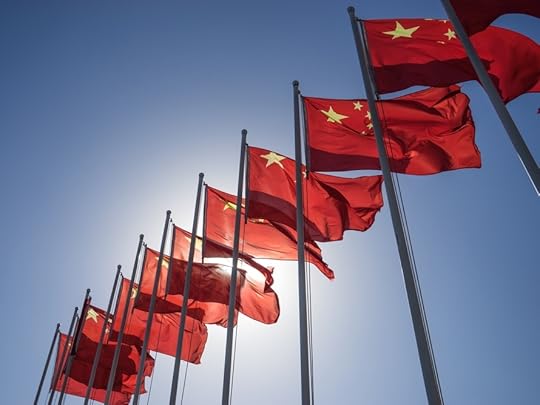 Asia PacificChinaChina Economy
Asia PacificChinaChina Economy
October 14, 2016
China’s PLA Faces Budget Cuts, Soldiers Protest
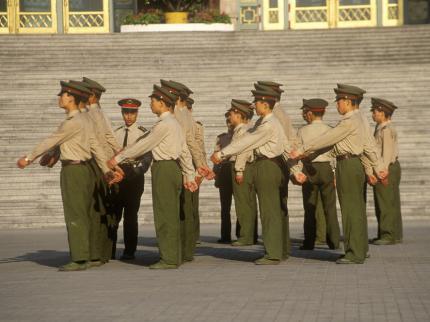
On Tuesday, more than a thousand demobilized soldiers, wearing green fatigues, staged a protest in Beijing across from the headquarters of the Ministry of National Defense.
China’s People’s Liberation Army faces increasingly severe budget constraints, and there has already been grumbling not only from former soldiers but also from currently serving senior officers.
The demonstrators arrived early Tuesday morning and stayed late into the evening. In the interim, they sang patriotic songs, waved national flags, and demanded relief. “They protested because they don’t have a job now after serving a long period of time in the army, some for a dozen years,” said Liu Feiyue, editor of the civil rights Minsheng Guancha website, to the Associated Press. “They are asking for employment.”
A 55-year-old protester from Shanxi province complained to the Wall Street Journal this way: “We’ve gotten nothing since retiring from service: no pensions, no social security.”
The Chinese central government has various programs that provide benefits to soldiers who have left the service of the world’s largest military, but often officials in cash-strapped locations divert these funds and use them for other purposes. Moreover, some local cadres pocket benefits for themselves.
The Central Military Commission, the Communist Party body that runs the armed forces, has promised the demonstrators a response by January 1 to their many grievances.
The PLA, as the combined army, navy, and air force is called, has gone through successive downsizings in recent decades, and the next one, slated to be completed by the end of next year, is expected to trim another 300,000—13 percent—from the ranks of the military.
And more trouble is likely on the horizon. The PLA’s announced budget increase for this year—7.6%—was much lower than had been expected. This figure, far less than last year’s announced 10.1% increase, is the first single-digit rise since 2010.
Even senior officers openly expressed discontent over the relatively paltry rise. Lt. Gen. Wang Hongguang, for instance, was quoted as saying the PLA needed a 20 percent budget increase.
The announced budget figures are surely inaccurate, but the reported percentage change is thought to represent spending trends.
Once, PLA spending posed no noticeable strain on central government finances. In recent years, however, military budget increases have far outpaced economic growth. Although generals and admirals have become more influential in Beijing policy circles under current ruler Xi Jinping, bringing the PLA budget back into alignment with the national economy would seem to be inevitable and is likely the leadership’s goal over the long term.
China’s gross domestic product is probably not growing at the 6.7 percent pace that Beijing’s National Bureau of Statistics has reported for the first two quarters of this year. Whatever the actual growth rate, the slowing economy will not allow funding levels sufficient to satisfy the flag officers. The PLA is already committed to an acquisition schedule the country cannot afford, and slipping growth in future years will make matters worse.
Moreover, a Chinese debt crisis could force the PLA to scrap whole programs.
The PLA’s increasing budgetary pressures along side Tuesday’s surprise demonstration suggests that downsizing is likely to be accompanied by social disruptions in the years ahead.
OG Image: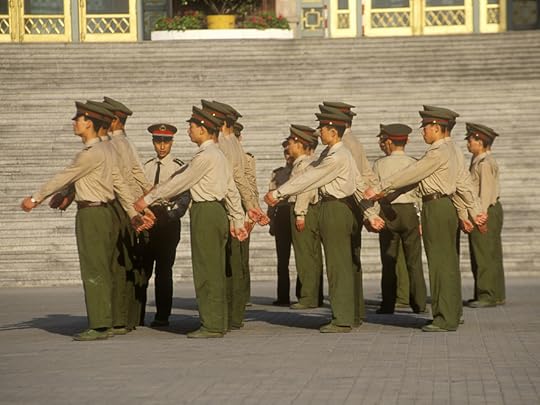 Asia PacificChina
Asia PacificChina
October 7, 2016
Philippine President to Obama: 'Go to Hell' as Asia Alliance Deteriorates
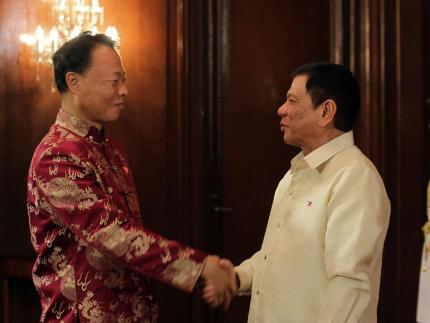
“No, no, no, he did not say that at all,” said Philippine Foreign Secretary Perfecto Yasay to reporters in Hanoi.
Yes, yes, yes, he did. Philippine President Rodrigo Duterte in fact said this in Vietnam on September 28, addressing the US: “You are scheduled to hold war games again which China does not want. I will serve notice to you now, this will be the last military exercise.”
You can understand Yasay’s attempt to smooth over what could end up the biggest blunder in his country’s post-colonial history. While Beijing threatens to dismember the Philippines, one island, rock, and shoal at a time, Duterte is trying to break the only thing that protects his country from Beijing, his military alliance with the United States. It would, of course, be difficult for the US to defend the Philippines if the Philippine and American militaries did not regularly exercise together.
Since his inauguration on June 30, Duterte has gone out of his way to antagonize his only protector. On Tuesday, he told President Obama “to go to hell.” In recent weeks he has called the American leader a “son of a whore” and used an uncomplimentary term in referring to the sexual orientation of Washington’s outgoing ambassador to Manila.
Duterte has also displayed pictures of what he called American atrocities from a hundred years ago. As observers say, there is no Philippine problem today that Duterte does not lay at America’s doorstep.
Many observers in Manila think their fiery leader is just trying to get a better deal from Washington, and virtually no one thinks he will actually terminate his country’s mutual defense pact, signed in 1951, with America.
Yet The Punisher, as he is known, is virulently anti-American, and there is a good chance he in fact feels the animosity he displays, now almost on a daily basis. If it were up to him, he would, as he threatened last week, expel every last American soldier, pilot, and sailor.
But it is not up to Duterte. He leads a country that is, on the whole, pro-American, especially now that the Chinese are threatening to seize Second Thomas Shoal and reinforce their grip on Scarborough Shoal, which it took in early 2012.
Duterte is, for the most part, alone in his virulent condemnation of the United States, at least among senior military officers and members of the country’s security establishment. And in any event, he has little room to maneuver. He can hurl insults, take Chinese aid, even end joint exercises with the US.
He cannot, however, surrender Second Thomas or cede an inch of other Philippine territory. And if he gives the Chinese any part of his country, he will be removed from office by a crowd in the street of his capital. Citizens, congregating in a busy Manila intersection, got rid of another tough-guy president, Joseph Estrada, in the “EDSA 2” demonstration of 2001, for much less of an offense.
In 1991, during another bout of Philippine anti-Americanism, Manila ejected the US Navy from Subic Bay and the US Air Force from Clark field. By 1994, China seized Mischief Reef from Manila
Fortunately, there are few in Philippine policy circles who have forgotten this sequence of events.
OG Image: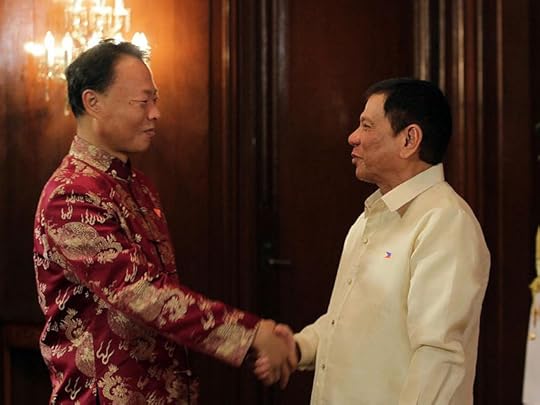 Asia PacificNorth AmericaPhilippinesUSAsiaChinaUnited StatesPresidentBarack ObamaObamaPresident ObamaDuterte
Asia PacificNorth AmericaPhilippinesUSAsiaChinaUnited StatesPresidentBarack ObamaObamaPresident ObamaDuterte
September 26, 2016
China's Warplanes Stalk Japan, Unite Neighbors
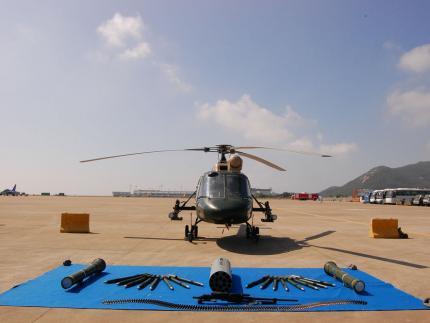
On Sunday, the Chinese air force flew more than 40 aircraft through Japan’s Miyako Strait into the Western Pacific Ocean.
The exercise, involving H-6K bombers, Su-30 fighters, and tankers, is the largest of its kind for China through this airspace. Previous exercises involved fewer than 20 planes according to Li Jie, a military analyst based in Beijing.
China flew through the strait, an international passageway that separates the Japanese islands of Miyako and Okinawa, for the first time in May of last year.
China’s Ministry of National Defense, in a statement quoting air force spokesman Shen Jinke, said the planes Sunday flew “systematically” to conduct early warning, sudden assault, and refueling tasks. Shen noted the exercise was to protect China’s “sovereignty and security” and “maintain peaceful development.”
Is that the real purpose of Sunday’s show of force? Chinese military analysts say their country was, in fact, sending a message to Tokyo. “It is a warning from Beijing to Japan: if you are coming to meddle in the South China Sea, then I’m going to flex my muscles at your doorstep,” said Antony Wong Dong, a military expert in Macau, to the South China Morning Post.
Wong also said his country is “eager” to show the region that it is “capable of breaking the first island chain, which is a substantial threat to it both psychologically and in reality.” The Miyako Strait is one of the critical chokepoints linking China’s coastal waters—in this case the East China Sea—to the Pacific.
China’s air force is evidently stepping up its presence in the pathways to wider water. The Sunday drill was the second time this month that Chinese military aircraft flew into the Western Pacific. On the 12th, Chinese planes—bombers, fighters, early-warning craft, and tankers—passed over the Bashi Channel, between Taiwan and the Philippines.
The increased Chinese military activity mystifies China historian Arthur Waldron of the University of Pennsylvania. As he points out, there is no endgame for Beijing. Yes, China can try to intimidate neighboring states, but as Waldron notes they will soon figure out that the Chinese are not going to shoot.
“Once their targets know they’re not going to shoot, it does not matter how many worthless planes they put up,” he told me a few hours after the provocative exercise near Okinawa. “Nobody is going to surrender just because a hundred planes fly over.”
What Beijing can accomplish, however, is lose friends and influence in the region and beyond. China showed its hand too soon Waldron notes, and now concerned states are forming a loose but powerful coalition. That coalition, even without the US, is stronger than China.
There is perhaps one way to explain China’s huff-and-puff belligerence: Communist Party politics. At the moment, senior generals and admirals of the People’s Liberation Army seem to have gained influence in policymaking and political circles and are implementing their “military diplomacy,” crowding out responsible voices. Because the flag officers could be acting with little or no civilian oversight, China’s external policies look like they are losing coherence, something noted by various analysts for more than a year.
As many have pointed out, in a time of evident turmoil outsiders do not have a good grasp of Chinese politics. That’s true, but one thing is becoming clear. In the Chinese capital only hostile answers are considered politically acceptable.
A decade ago, Chinese foreign policy looked deft. Today, it is almost unrelentingly militant. And, as Waldron notes, there no longer appears to be any point to what Beijing is doing.
OG Image: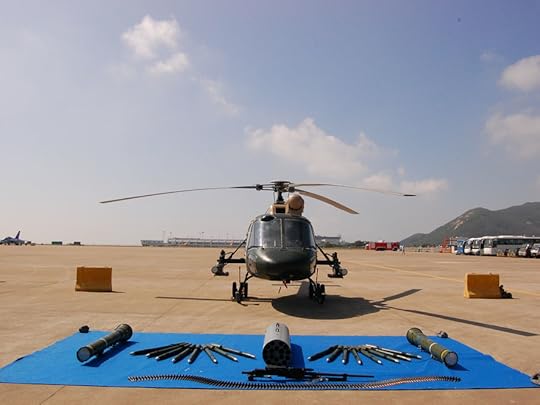 Asia PacificChinaJapanMilitary
Asia PacificChinaJapanMilitary
Gordon G. Chang's Blog
- Gordon G. Chang's profile
- 52 followers



